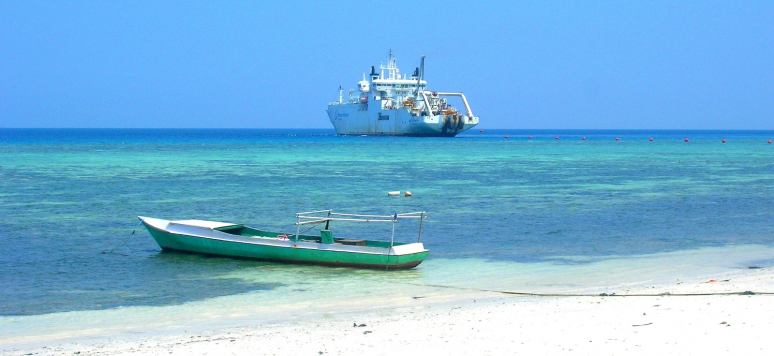Etudes de l'Ifri - The Pacific caught in the World Wide Web? Geopolitics of submarine cables in Oceania Etudes de l'Ifri, September 2022

This article provides a review of the digital connectivity of the Pacific Islands nations (Polynesia, Melanesia, and Micronesia) and the main challenges and prospects arising from it, at a time when the submarine cable market is undergoing profound change and a growing politicization of this technology on the international scene.
In 2022, the 450 fiber-optic cables stretching across the world’s seabed carry more than 98 percent of international data and have become essential to the proper functioning of our societies. Submarine cable connection is all the more important to the geographically isolated Pacific islands because it enables them to digitize various sectors of the economy and society (industry, education, health, etc.) and to maintain a virtual link to the rest of the world. When a submarine cable is disabled, satellite links cannot completely offset this loss.
The topic of submarine cables in Oceania is inextricably tied up with the geopolitics of the Indo-Pacific and rivalries between powers. Because of the long distances separating them from the rest of the world and the high cost of cables, the island territories of the Pacific are more liable to be dependent on other countries and subject to outside influence. Cables are also involved in the escalation of maritime competition between states, in a context of military, economic, demographic, and environmental issues, including seabed warfare.
Against the backdrop of growing connectivity in the Pacific region since 2011 and the rise of China, the Pacific Ocean has become one of the three main routes for data in the twenty-first century. Within the region, the insular Pacific has several distinguishing features:
- Because of its particular geography, it appears under-meshed compared with the northern trans-Pacific route and the inter-Asia links. It looks more like a transit zone than a genuine space for investment.
- Its ecosystem and the methods used by public and private actors to commission, manage, and operate submarine links in the region have been adapted to local constraints and challenges.
- The main winners in this scenario are Australia and the United States, while the main loser is China, whose growing ambitions in the region are continuously thwarted.
- As a stage for Sino-American rivalry, the insular Pacific has to adapt to circumvent political difficulties and respond to its population’s urgent need for digital resilience.
- This challenge seems likely to result in a number of alternative cable projects emerging, offering new opportunities in the digital domain.
